Speed Cushions vs. Speed Bumps, Humps, and Tables
Speed is one of the most common causes of road accidents, injuries, and deaths. It is mostly due to drivers’ negligence when they don’t slow down in a slow zone where the traffic volume is high, or vehicles and pedestrians are close to each other.
Therefore, the Transportation Department and federal highway administration use various traffic control devices as preventive measures. These tools control traffic speed to improve pedestrian safety and traffic safety in different areas.
Speed cushions, speed bumps, speed humps, and speed tables are some of the most popular speed control devices. But what makes them different from each other, particularly from speed cushions? Read the article to find out!
For more information about Speed Cushions, you can discover here: Speed Cushions: All answers to your questions.

Discover here our full range of Speed Cushions!
Speed Cushions vs. Speed Bumps
Speed cushions have a raised section that is elongated. They also have wheel cutouts to allow emergency vehicles and buses to drive at their usual speed.
They are designed such that their width is more than the width of standard cars but less than that of large vehicles. This construction helps ambulances and fire trucks drive over these tools without speed reduction and reach their destination on time. They reduce vehicular speed up to 20 miles per hour (mph).
In contrast, speed bumps are raised vertical deflections that are smaller in length compared to speed cushions. They also don’t have wheel cutouts. Their impact on vehicles is greater than wheel cushions’ impact. That is why car and emergency vehicle drivers must reduce their speed from 5 to 10 mph while driving over them.
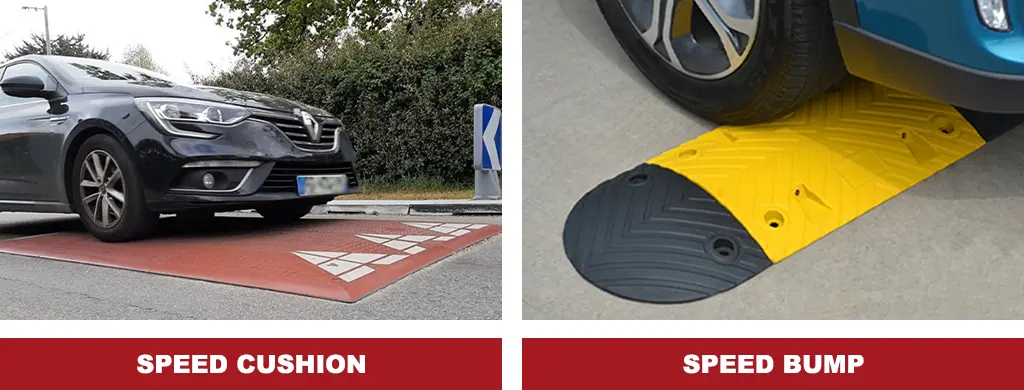
Speed Cushions vs. Speed Humps
Speed humps are more aggressive than speed cushions but less aggressive than road bumps. Their length is shorter than the length of speed cushions. That is why they are used in 10 to 15-mph speed zones.
They are often found in parking lots, bicycle lanes, and residential areas where the risk of collision between vehicles and pedestrians is high.
Speed humps lack wheel cutouts, so municipalities avoid them on emergency vehicle routes. They can slow down cyclists and bicyclists, while speed cushions cannot do so due to the presence of wheel cutouts.
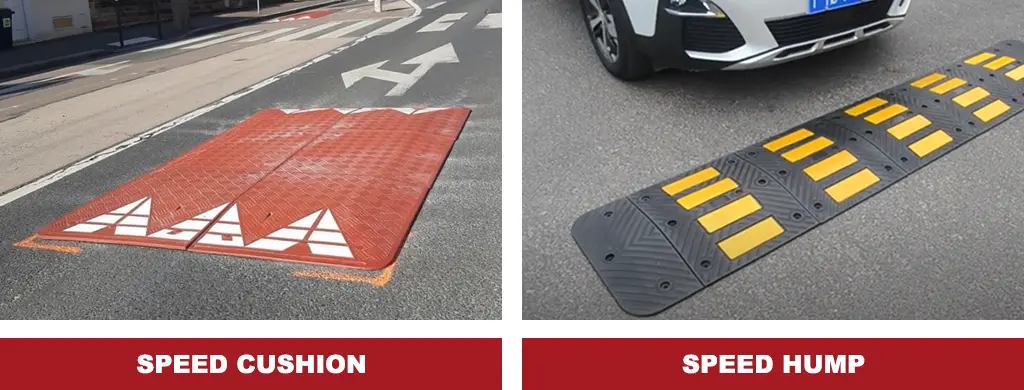
Speed Cushions vs. Speed Tables
Speed tables are raised flat surfaces that are wide enough to let an entire wheelbase of a vehicle rest on top of them.
Unlike speed cushions, they cover the full width of city streets or roads. They can reduce a vehicle’s speed from 20 to 30 mph.
They are also not preferred on roads, roundabouts, or pedestrian crossings from where emergency vehicles pass often.
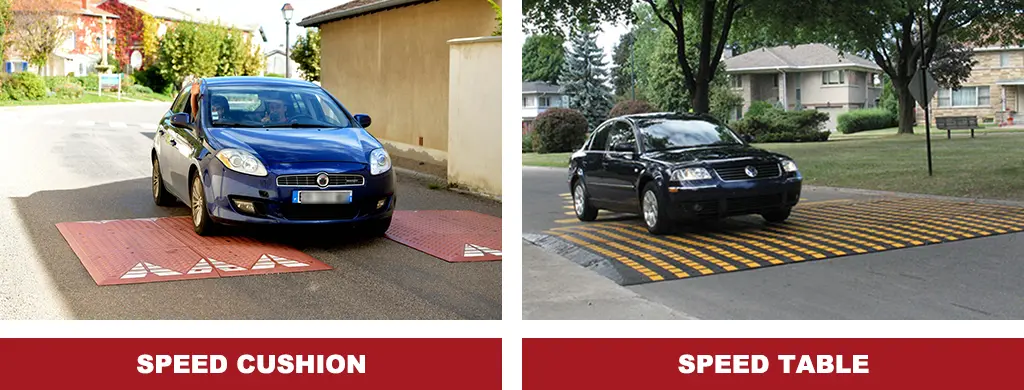
Get in touch
The Speed Cushions Factory is a leading manufacturer of rubber speed cushions located in Qingdao, China.
Feel free to contact us!
We are always here to help!
Qingdao, Shandong Province, China.
sales@speed-cushion.com
What are traffic calming measures, and do they really work?
As the name indicates, traffic calming devices are physical tools, signs, or signals that control, manage, and organize city traffic differently. They come in various forms; some reduce vehicular speed, while others control their movement on roads.
Some examples of traffic calming measures we often see around us are:
- Speed hump
- Speed bump
- Speed cushion
- Traffic signals
- Speed breakers
- Bollards
- Traffic cones
- Wheel stops
- Road signs

What are the benefits of using speed cushions over other traffic calming devices?
Each traffic calming device offers numerous benefits, like a speed hump, speed bump, or signage. But there are some speed cushion benefits that you may not find in other devices.
Some of these benefits are:
Can be fixed in a variety of places
Do you need a traffic calming device for a concrete two-way road, or do you probably need it for an asphalt roundabout? A speed cushion is perfect for all your needs.
You can fix it on different kinds of surfaces and different kinds of places to meet your traffic control needs.
If you choose recycled rubber speed cushions over plastic, concrete, or asphalt speed cushions, you will find that they can mold according to the road’s surface. It will further help with the installation and efficiency of this device.
Do not affect emergency response time
Emergency vehicles like fire trucks or ambulances must reach their destination on time. Any delay can lead to unwanted casualties.
Speed breakers, speed humps, and speed bumps force emergency vehicles to reduce their speed while driving over them, but speed cushions do not do that. It makes them highly suitable for emergency vehicle routes.
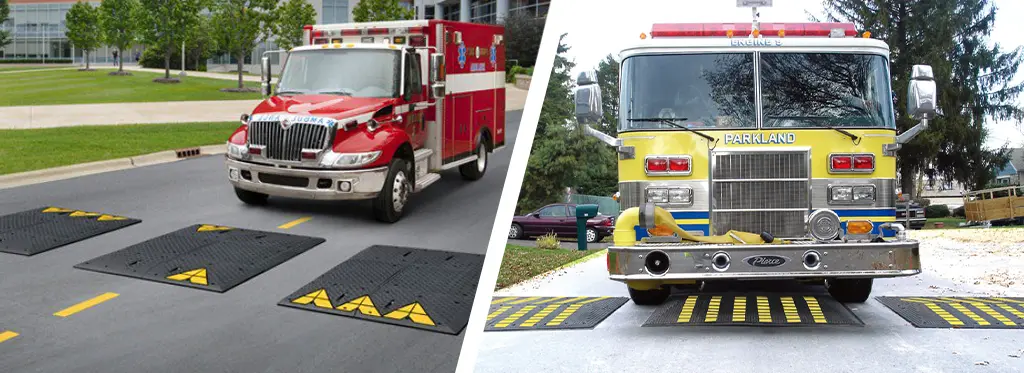
Do not disturb cyclists or bicyclists
The spacing between two adjacent speed cushions allows cyclists and bicyclists to avoid the raised section of speed cushions and pass without reducing their speed.
It helps them ride smoothly and reach their destination on time.
In contrast, speed breakers or speed humps fixed in traffic lanes, bike lanes, or other urban areas force cyclists and bicyclists to reduce their vehicular acceleration to drive over them smoothly.
Do not cause stormwater accumulation
Many speed-controlling devices consist of a single long structure that prevents the free movement of rainwater. Due to this, the water accumulates on roadways and causes disturbance to drivers.
On the other hand, two adjacent speed cushions have a gap in between that allows free movement of rainwater. In this way, water reaches the drainage easily, which helps keep roads safe for all.
Produce the least impact on cars and drivers
Speed cushions have a raised elongated surface, while speed bumps and humps have a raised small surface. Therefore, the impact of speed cushions on vehicles is very little compared to the impact of other traffic calming techniques.
Produce the least traffic noise
Another benefit of installing speed cushions is that they do not produce as much noise as speed humps or speed bumps do when a motor vehicle drives over them. It makes them highly suitable for a school zone, a work zone, a pedestrian zone, or a residential area where the need to reduce traffic noise is high.
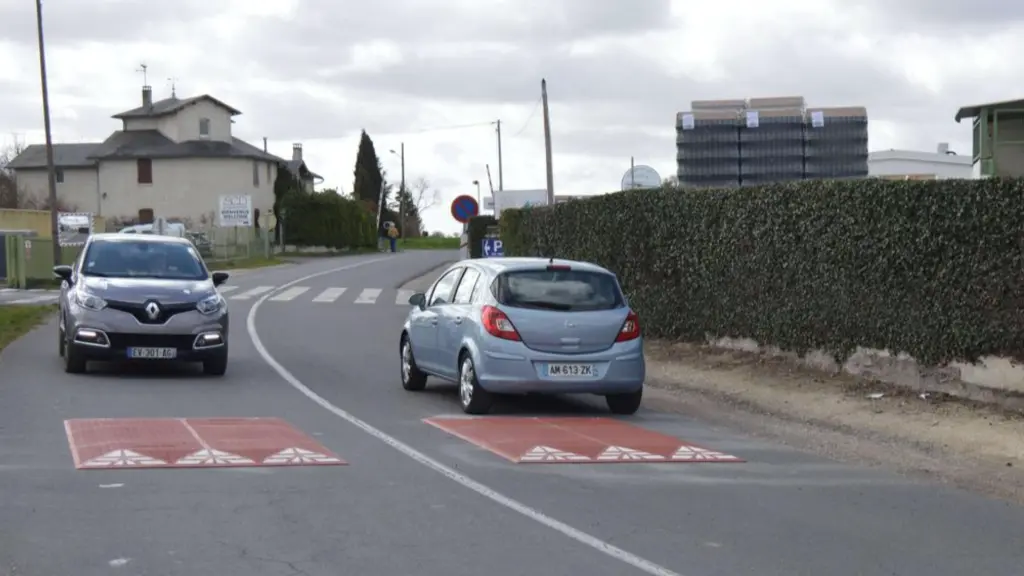
Other reasons to choose speed cushions
Speed cushions offer many other benefits that make them worth investing in. Some of their key benefits are:
Available in different materials: Speed cushion manufacturers use various materials, including recycled plastic, recycled rubber, concrete, and asphalt, to produce speed cushions of different types. It gives buyers several options to choose from.
Come in various sizes and designs: You can find speed cushions in numerous dimensions, styles, and designs according to your aesthetic and speed control needs.
Can be used with other devices: You can enhance the efficiency of your traffic control plan by using speed cushions with other devices like traffic control signs, warning signs, traffic barriers, parking signs, and rumble strips.
High visibility at night: Many speed cushions have reflective tape that enhances their visibility.
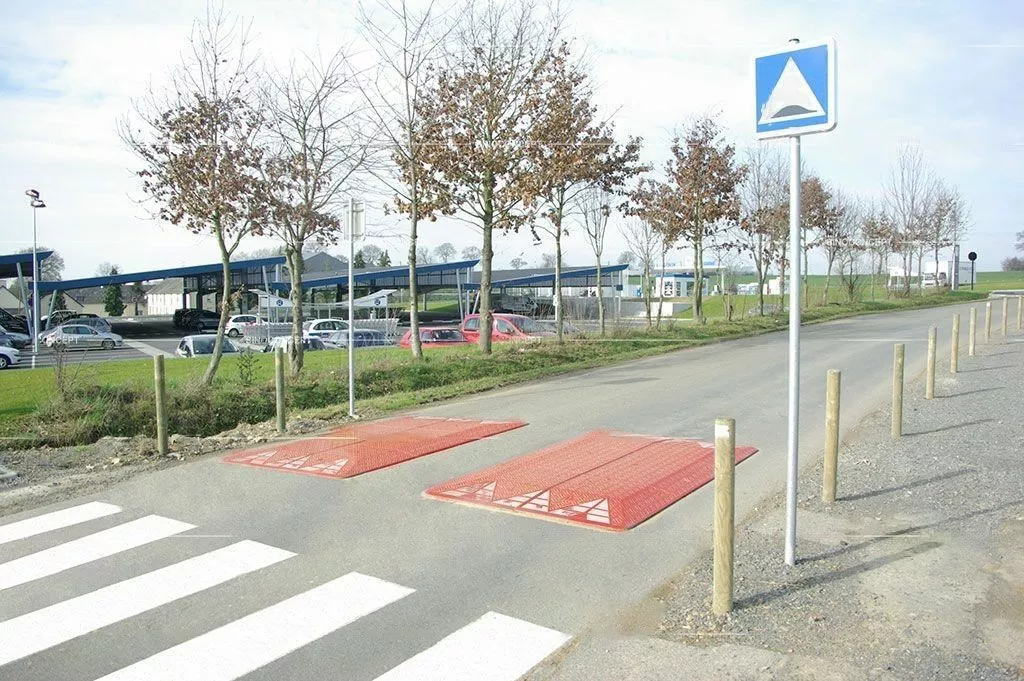
Conclusion
Speed cushions are one of the best speed control devices to discourage road accidents and fatalities. They slow down speeding motorists and prevent collisions between vehicles and pedestrians. They reduce the speed of standard-sized cars without affecting the speed of large-sized vehicles like buses and ambulances.
You can install them in numerous places, including crosswalks, traffic intersections, roadways, low-speed zones, and road traffic interchanges.
If you are looking for a traffic-calming device that can slow down cars without slowing down ambulances, cyclists, and bicyclists, you should go for rubber speed cushions, as they have plenty to offer!
Get in touch
The Speed Cushions Factory is a leading manufacturer of rubber speed cushions located in Qingdao, China.
Feel free to contact us!
We are always here to help!
Qingdao, Shandong Province, China.
sales@speed-cushion.com
You might be interested in the below articles:
- What are the Most Famous Traffic Calming Devices?
- How Far apart should Speed Cushions be Installed?
- How to Install a Speed Cushion?
- Top 5 Speed Cushions Brands!
- What are the Dimensions of a Speed Cushion?
- Speed Bumps, Humps, Tables, Cushions – What’s the difference?
- Speed Cushions in Different American Cities
- How does a Speed Cushion work?
- What are Speed Cushions Regulations?
- Top 8 Frequently Asked Questions about Speed Cushions